The Twitch API allows you to integrate live streaming, user authentication, and chat features directly into your app, tapping into Twitch's massive audience of over 140 million monthly users. Here's what you need to know:
- What It Does: Access data like live streams, user profiles, and chat features through RESTful endpoints.
- Why Use It: Boost user engagement with real-time updates, personalized content, and notifications.
- Getting Started:
- Create a Twitch developer account.
- Register your app and obtain API credentials (Client ID and Client Secret).
- Use OAuth 2.0 for secure authentication.
- Features:
- Fetch live stream info, user profiles, and chat data.
- Use EventSub for real-time notifications.
- Manage tokens securely and handle rate limits.
- US Localization: Format dates (MM/DD/YYYY), times (12-hour AM/PM), and currency ($).
Integrating Twitch API can make your app more interactive and engaging while ensuring a secure and responsive experience for users.
Twitch API Tutorial using Node JS
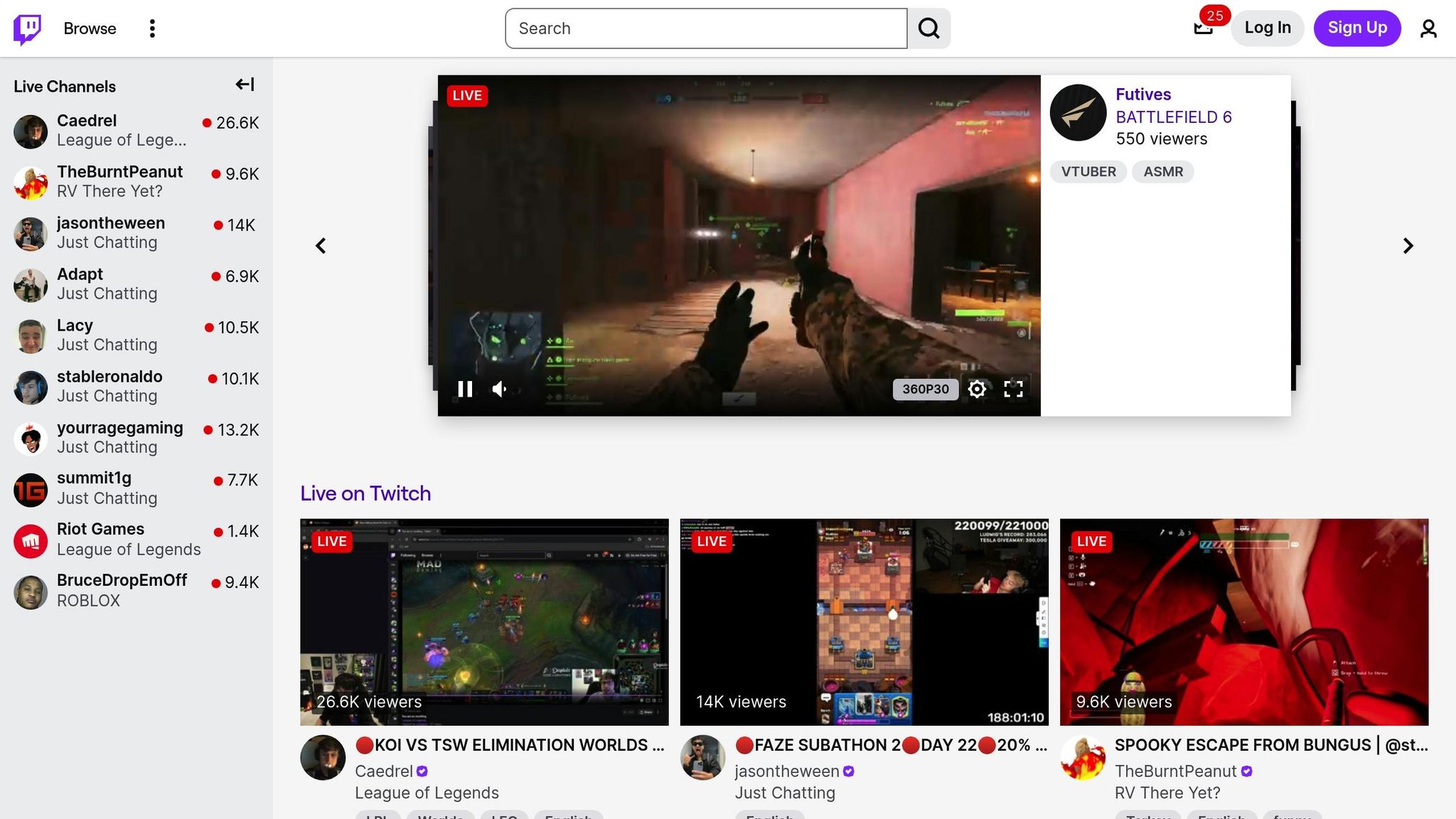
Setting Up Your Twitch Application
To get started with Twitch's API, you'll need to register your app through the Twitch Developer Console and obtain API credentials.
Registering a New Twitch App
Before registering your app, make sure you enable two-factor authentication (2FA) in your Twitch account's Security settings. This is a required step to proceed.
Once 2FA is set up, go to the Twitch Developer Console and navigate to the "Applications" section. Click on "+ Register Your Application" to begin the registration process. You'll need to provide three key details about your app:
- Application Name: Choose a name that is both unique and descriptive. For example, if you're creating a US-based mobile app to help users find gaming streams, a name like "StreamCompanionUS" would work well. Avoid overly generic names that could conflict with existing apps.
-
OAuth Redirect URI: This is the URL where Twitch will redirect users after they authenticate. For development, you might use something like
http://localhost:3000, while for production, you could usestreamcompanionus://auth. Make sure the URI matches exactly between your app code and the Developer Console - any mismatch, even a single character, will cause authentication errors. - Application Category: Select a category that best describes your app's primary function, such as "Mobile", "Game Integration", or "Analytics." This helps Twitch understand your app's purpose and may impact permissions or review processes.
Getting Your API Credentials
Once your app is registered, it will appear under "Developer Applications" in the console. Click "Manage" to access the credentials page, where you'll find two critical pieces of information:
- Client ID: This is your app's public identifier. It's safe to include in client-side code or on web pages, as it is designed to be public-facing. Copy this ID and add it to your app's configuration - it will be included in every API request to identify your app to Twitch's servers.
- Client Secret: This credential must be kept private. Generate it using the "New Secret" button, but remember that creating a new secret will immediately invalidate the old one. Store the Client Secret securely, such as in environment variables or a secrets manager on your server. Never include it in client-side code, public repositories, or any location where users could access it.
For US-based apps, ensure that credentials and documentation follow American formatting standards, such as MM/DD/YYYY for dates and $ for currency, to provide a consistent user experience.
With your Client ID and Client Secret ready, you're all set to implement OAuth 2.0 authentication for your app.
Setting Up OAuth 2.0 Authentication
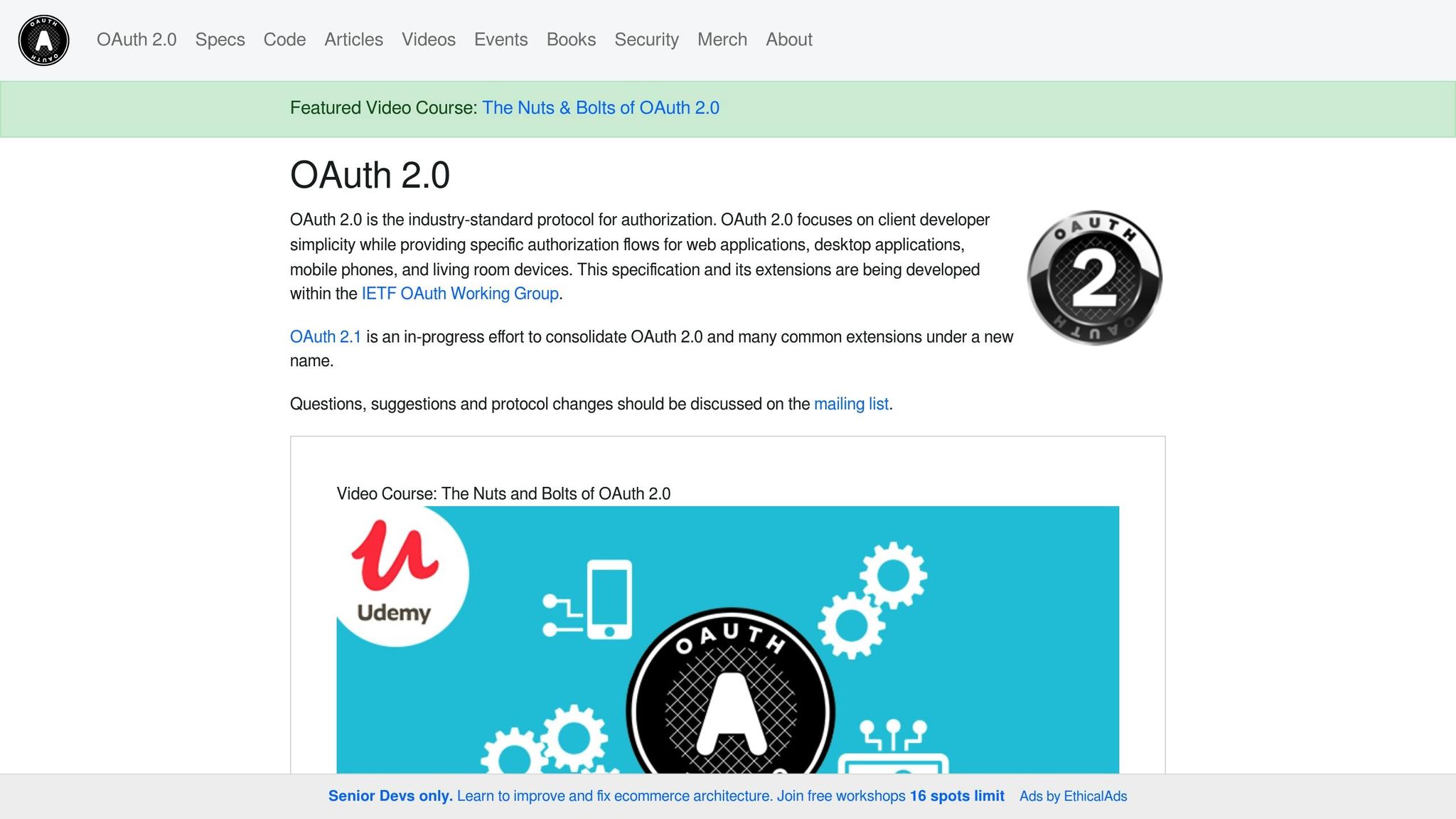
OAuth 2.0 is the backbone of secure communication between your app, Twitch, and users. It allows your app to access the necessary features without exposing sensitive user information, like passwords. This ensures both security and functionality.
Understanding OAuth 2.0 Flows
Twitch relies on two types of tokens, each with a specific role. User Access Tokens are necessary when your app interacts with user-specific data, such as managing stream settings or viewing subscription details. On the other hand, App Access Tokens are used for general operations, like fetching public stream data or game categories, that don't require user-specific permissions.
For mobile apps, the Implicit Grant Flow is the go-to method for obtaining User Access Tokens. This approach avoids exposing the client secret on the device. When a user connects their Twitch account to your app, you direct them to Twitch’s authorization endpoint with your app's Client ID and the permissions (scopes) it needs.
The authorization URL should look like this:
https://id.twitch.tv/oauth2/authorize?client_id=YOUR_CLIENT_ID&redirect_uri=YOUR_REDIRECT_URI&response_type=token&scope=REQUESTED_SCOPES.
Once the user grants permission, Twitch redirects them to your app, including the access token in the URL fragment.
For App Access Tokens, the Client Credentials Flow is simpler. You send a POST request to https://id.twitch.tv/oauth2/token with your Client ID and Client Secret. This flow is ideal for accessing public data, such as popular games or general stream information, without requiring user authentication.
| Token Type | Best For | Security Level | Lifespan |
|---|---|---|---|
| User Access Token | User-specific data and actions | High (requires user consent) | 4–6 hours |
| App Access Token | Public data and app-level tasks | Medium (app-level permissions) | 60 days |
Managing Tokens
Proper token management ensures your app runs smoothly and securely. On Android, use EncryptedSharedPreferences, and on iOS, rely on the Keychain to store tokens securely. Avoid storing tokens in plain text files or unsecured locations like regular shared preferences.
Tokens have specific expiration times: User Access Tokens typically last 4–6 hours, while App Access Tokens remain valid for about 60 days. Your app should always check a token’s validity before making API requests and refresh tokens automatically to avoid disruptions.
When using refresh tokens, store them securely, just like access tokens. The refresh process should happen seamlessly in the background, ensuring a smooth user experience without unnecessary login prompts. If the refresh fails, guide users through re-authentication.
Common challenges include revoked permissions, expired tokens, or network errors during refresh attempts. Build fallback mechanisms to handle these issues and prompt users to re-authenticate when necessary. Additionally, log authentication events for debugging purposes, but never include sensitive token data in your logs.
Striking a balance between strong security and user convenience is essential. Your app should handle token operations behind the scenes while ensuring secure storage and transmission. By doing so, your app can consistently and safely access Twitch features.
sbb-itb-8abf120
Making API Requests and Using Twitch Features
Once your OAuth setup is complete, you can start using the Twitch API to fetch live stream data and manage interactions. With OAuth 2.0 in place, you can make authenticated requests to unlock Twitch's features. The API works with standard HTTP methods and delivers responses in JSON format, making it easy to integrate into your mobile app.
To make an API request, you’ll need two key headers: Client-Id and Authorization (which includes your access token). Here's an example:
GET https://api.twitch.tv/helix/streams?user_login=example_user
Headers:
Client-Id: YOUR_CLIENT_ID
Authorization: Bearer USER_ACCESS_TOKEN
Twitch enforces rate limits: 800 requests per minute for user tokens and 1,200 requests per minute for app tokens. Keep an eye on the Ratelimit-Remaining header in the response, and if you hit the limit, implement retry logic to avoid disruptions.
Core API Features
With authentication ready, you can take advantage of several key Twitch API features to enhance your app:
- Live stream data: Access real-time information like stream status, viewer counts, game categories, and stream titles to keep users updated.
- User profiles and channel data: Fetch details like profile pictures, bios, follower counts, and subscription info to enrich user interactions.
- Chat management: Enable chat functionality, including sending and receiving messages, moderating conversations, and managing subscriber-only modes.
- Clip creation and management: Allow users to capture and share exciting moments from streams, while the API handles the technical side.
- EventSub integration: Receive real-time notifications for events like channels going live, new subscribers, or raids - no need for constant polling.
Here’s a quick breakdown of some features:
| Feature | Token Required | Rate Limit Impact | Real-time Updates |
|---|---|---|---|
| Live Stream Data | User or App | Medium | Via EventSub |
| User Profiles | User (for private data) | Low | Manual refresh |
| Chat Management | User | High | WebSocket connection |
| Clip Creation | User | Medium | Immediate |
Formatting Data for US Users
To create a smooth experience for American users, format API response data in familiar local styles. Use MM/DD/YYYY for dates, display times in the 12-hour format with AM/PM, and format monetary values with $ and commas. For measurements, stick to imperial units.
Since Twitch timestamps are provided in UTC, ensure your app converts them to the user’s local timezone. Consistently applying their timezone preferences for all time-related displays adds a polished touch to your app.
Finally, when rate limits are exceeded, use exponential backoff for retries and display clear, friendly error messages like, “Too many requests – please wait a moment.” This helps maintain a positive user experience.
Next up, dive into advanced integration techniques like EventSub and better error handling.
Advanced Integration Techniques
Advanced integration techniques are essential for building apps that can handle high traffic, respond to events instantly, and provide a dependable user experience. These methods emphasize real-time data delivery, effective error management, and secure session handling.
Using EventSub for Real-Time Updates
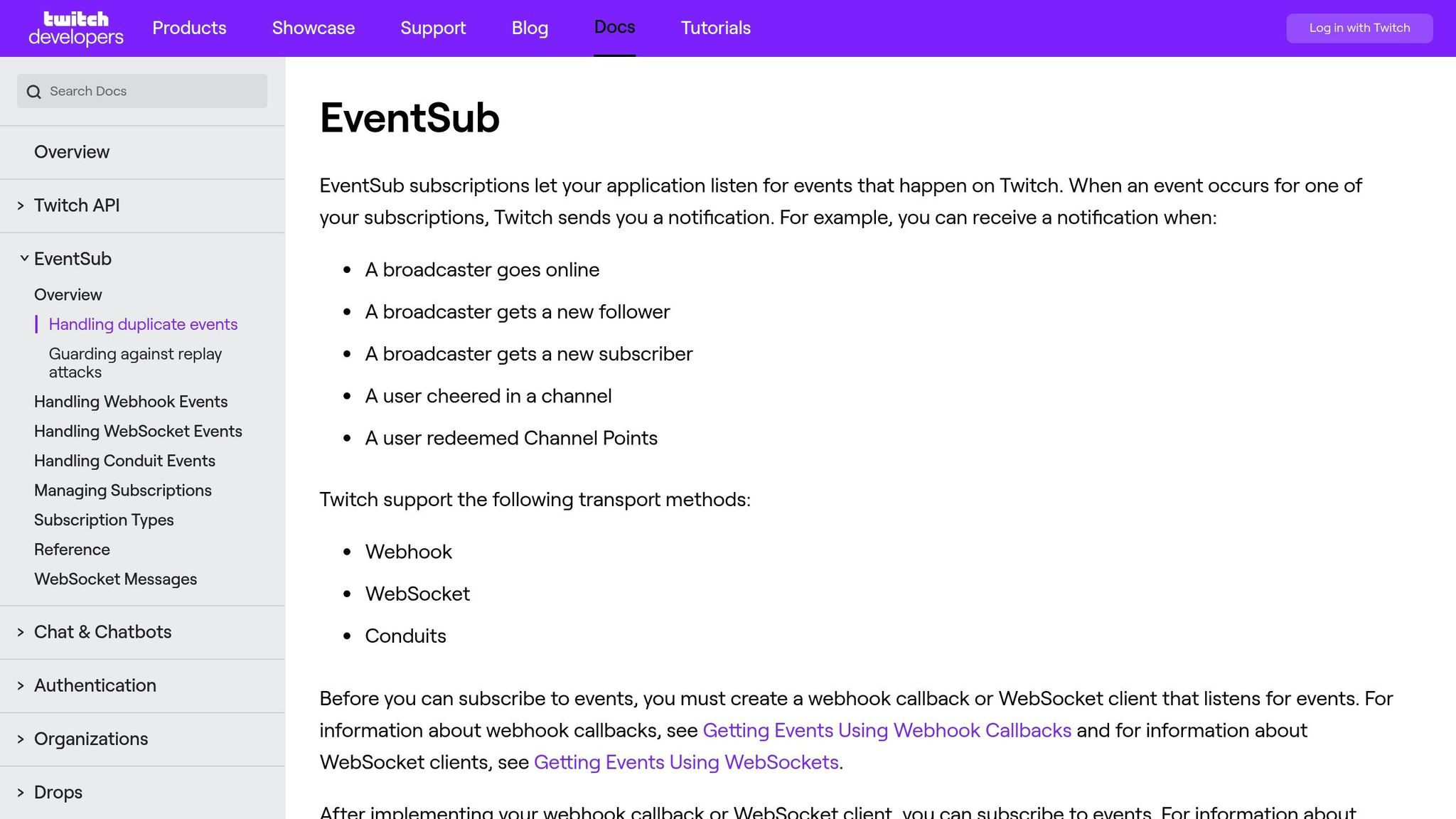
EventSub, Twitch's webhook system, allows your app to receive notifications in real-time when specific events occur. Instead of constantly polling Twitch for updates, EventSub ensures your app is notified immediately when a streamer goes live, gains a new follower, or receives a subscription.
To set up EventSub, you'll need a callback URL capable of handling HTTP POST requests from Twitch. When you subscribe to an event, Twitch sends a verification challenge to your endpoint. Your server must respond with the challenge value exactly as it was received to confirm ownership. Once verified, Twitch begins sending event notifications as JSON payloads to your callback URL.
Here’s how the verification process works: Twitch sends a POST request with a challenge string, and your server replies with that same string. After this step, you’ll start receiving real-time updates for all the events you’ve subscribed to.
Here's a quick comparison between polling and EventSub webhooks:
| Approach | Response Time | Server Load | Scalability | Complexity |
|---|---|---|---|---|
| Polling | Delayed (30–60s) | High (frequent calls) | Limited | Simple to implement |
| EventSub Webhooks | Instant (real-time) | Low (event-driven) | Highly scalable | Requires setup |
EventSub is especially useful for mobile apps that send push notifications. For example, when a followed streamer goes live, your webhook can process the event, retrieve relevant details, and send a push notification to users. For US-based audiences, ensure notifications use familiar time formats for better user experience. Once this is set up, focus on error handling and managing rate limits to keep your app running smoothly.
Handling Errors and Rate Limits
Managing API rate limits and errors is crucial for maintaining app performance. Monitor the Ratelimit-Remaining header in every API response to keep track of your remaining requests. If you're approaching the limit, slow down your request rate or queue less urgent calls to avoid hitting the cap.
Different API errors require tailored responses. For example:
- A 401 Unauthorized error means your access token has likely expired or is invalid. In this case, trigger an automatic token refresh using your stored refresh token.
- A 400 Bad Request error points to malformed data. Make sure to validate all parameters before sending requests.
- Network timeouts should prompt retries with progressively longer delays to avoid overwhelming the server.
Logging error patterns and response times can help you identify recurring issues. If certain API endpoints are consistently failing or responding slowly, consider fallback options like displaying cached data with a "last updated" timestamp. This keeps your app functional even during temporary disruptions.
Managing User Sessions and Data
Once your app handles errors effectively, focus on secure session management to ensure a smooth user experience. Store tokens securely using resources like iOS Keychain or Android Keystore. For session data, use fast local storage combined with centralized state management to keep everything synchronized.
User session data often needs both quick access and long-term storage. For instance:
- Frequently accessed data, like user profiles or followed streamers, can be stored in memory or fast local storage (e.g., SQLite).
- Dynamic data, such as live stream statuses, can be cached locally and updated through EventSub notifications or periodic API calls.
A centralized state management system can help maintain consistency across your app. For example, when an EventSub notification indicates a streamer is live, you can update your local database, refresh the stream list on the UI, and trigger a push notification - all from a single event handler.
To further enhance security:
- Use HTTPS for all API communications.
- Implement automatic logout after periods of inactivity.
- Conduct regular security audits to identify vulnerabilities.
For apps targeting US users, timezone-aware session management is key. Store user timezone preferences and convert Twitch’s UTC timestamps to local time before displaying them.
If you need expert guidance, teams like Zee Palm (https://zeepalm.com) specialize in building robust backend systems for webhook management, secure session handling, and API optimization. Their experience in scaling infrastructure and tailoring apps for the US market can ensure high performance and a seamless user experience.
Key Points for Twitch API Integration
Integrating the Twitch API into your mobile app opens the door to interactive and multimedia-rich features. Here's a guide to help you navigate the process, from setup to real-time updates.
Integration Checklist
After setting up and authenticating your application, use this checklist to ensure a complete and secure Twitch API integration.
Authentication and Setup
Start by registering your app to obtain API credentials. Make sure to enable two-factor authentication for added security. Use a unique app name and provide a proper OAuth Redirect URL to streamline the process.
OAuth 2.0 Implementation and Security Practices
OAuth 2.0 is essential for secure API access. For mobile apps, the Implicit Grant flow works well since it avoids handling client secrets. Server-side applications, on the other hand, should use the Authorization Code Grant flow. Always follow security best practices: use HTTPS, encrypt tokens in local storage, and rotate secrets regularly.
Core Feature Integration
Twitch's API offers access to user data, live streams, chat functionality, and multimedia features. With Twitch attracting over 140 million monthly active users, these features can enhance engagement significantly.
Real-Time Capabilities
Use EventSub webhooks to receive real-time updates about streams, followers, and other activities. This approach is more efficient than polling, reducing server load while keeping your app up-to-date.
Error Handling and Rate Limits
Monitor error codes and respect rate limits to maintain smooth functionality. Implement exponential backoff to handle retries effectively.
US Localization Standards
For applications targeting US users, format data accordingly. Display currency as $1,234.56, use MM/DD/YYYY for dates, 12-hour AM/PM time format, and imperial units for measurements. Temperatures should be shown in Fahrenheit.
By following these steps, you can create a secure, optimized, and user-friendly Twitch API integration.
About Zee Palm's Development Services
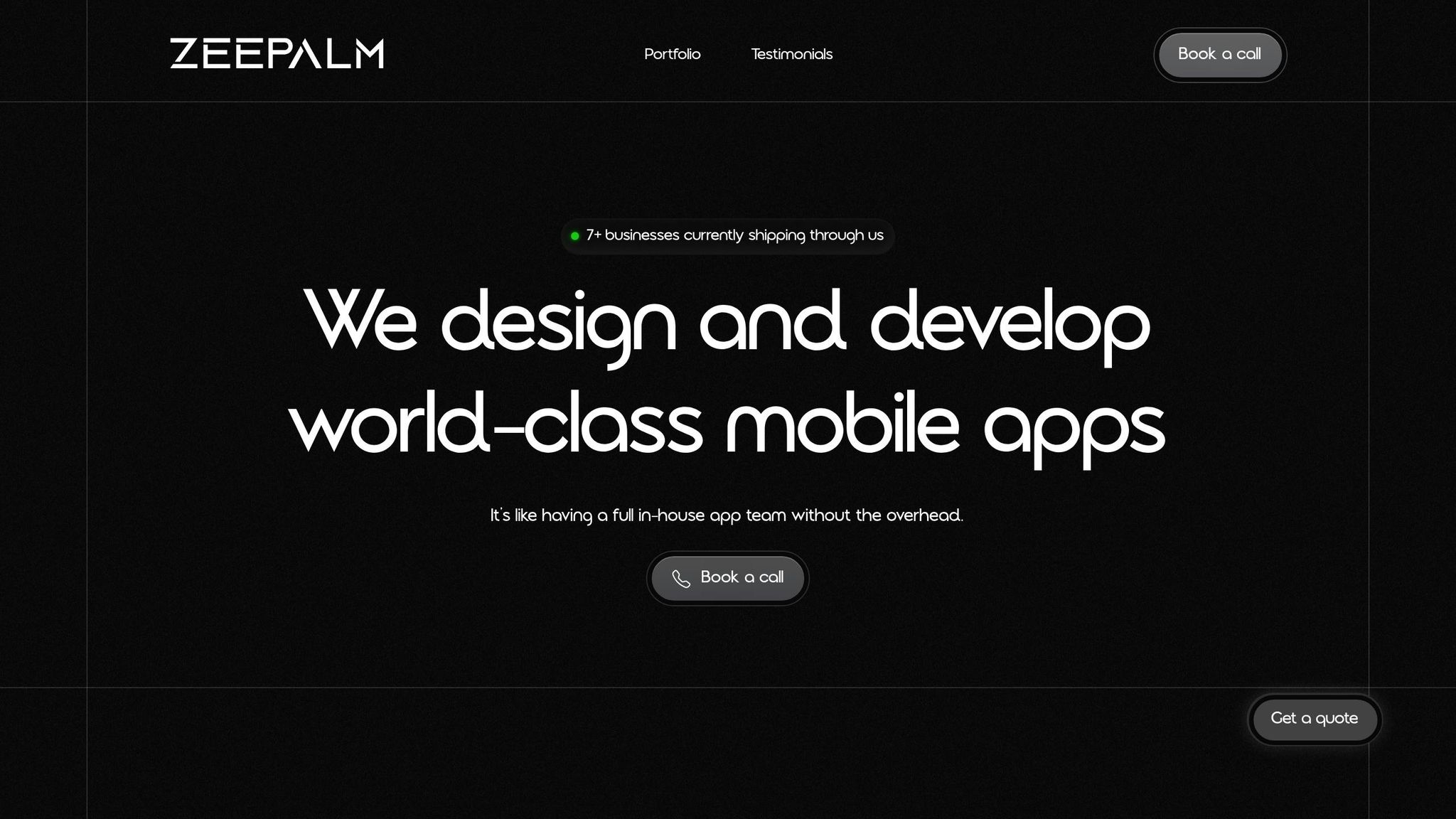
If you're looking for expert assistance, Zee Palm offers specialized services to simplify the integration process.
Building a reliable Twitch API integration requires a deep understanding of authentication flows, real-time data management, and secure session handling. Zee Palm has over a decade of experience in custom mobile app development, with more than 100 successful projects delivered to over 70 clients. Their expertise spans social media platforms, AI, SaaS, and applications requiring advanced multimedia and real-time features.
With a team of 13 professionals, including 10 skilled developers, Zee Palm is well-equipped to handle everything from OAuth 2.0 implementation to EventSub webhook management and US market localization. They also excel in building scalable backend systems and optimizing API performance, making them a strong partner for developers aiming to create engaging, real-time apps powered by Twitch.
Whether you need help with security, performance, or scaling your application, Zee Palm's experience ensures your Twitch-powered project is in capable hands.
FAQs
How do I keep my Client Secret secure when integrating the Twitch API into my app?
To keep your Client Secret secure when working with the Twitch API, consider these key practices:
- Avoid exposing your Client Secret in client-side code (like JavaScript or mobile apps), as it can be easily accessed by others.
- Securely store your Client Secret on your server and manage sensitive credentials using environment variables.
- Always use HTTPS for API requests to ensure data is encrypted during transmission.
- Regularly update your Client Secret and immediately revoke any keys that may have been compromised.
These steps can help protect your app and its connection to the Twitch API from potential threats.
What are the advantages of using EventSub for real-time updates instead of traditional polling?
EventSub brings a clear advantage over traditional polling methods when it comes to real-time updates. Instead of repeatedly pinging the server for changes, EventSub sends updates immediately as events happen. This approach not only eases the strain on servers but also makes better use of resources and boosts app performance.
On top of that, EventSub enhances the user experience by providing timely and precise updates. This is especially important for applications that thrive on real-time interaction, like live streaming or interactive platforms. By adopting EventSub, developers can channel their energy into creating engaging features without being bogged down by the inefficiencies of constant polling.
What are the best practices for managing API rate limits to ensure smooth app functionality?
To keep your app running smoothly and avoid interruptions caused by API rate limits, here are some practical tips you can follow:
- Keep an eye on API usage: Regularly monitor how many API requests your app is making to ensure you stay within the allowed limits.
- Leverage caching: Save commonly used data locally so you don’t have to make repeated API calls for the same information.
- Use exponential backoff for retries: If you hit the rate limit, wait progressively longer before retrying requests to avoid putting extra strain on the server.
- Streamline your API calls: Combine multiple requests into one whenever possible, and only request the data that’s absolutely necessary.
By staying on top of your API usage and making these adjustments, you can deliver a consistent experience for your users while minimizing downtime.
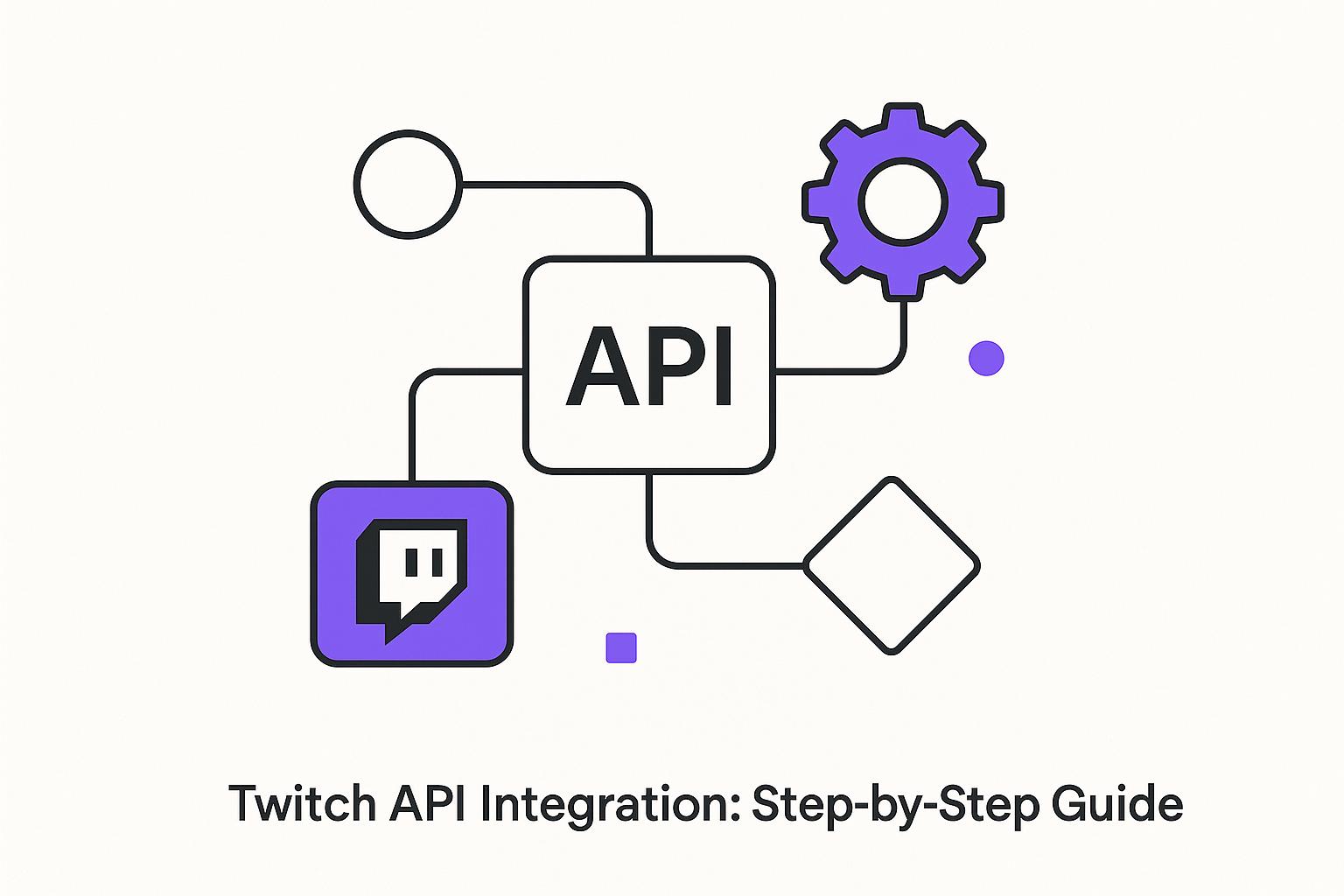

.avif)
